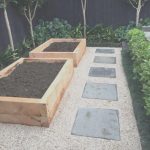Pressure treated wood is a common material used in gardening, but many gardeners wonder: is old pressure treated wood safe for vegetable gardens? This article will explore the potential risks and concerns associated with using old pressure-treated wood in vegetable gardens, as well as provide guidelines for ensuring the safety of the wood before use.
Pressure-treated wood has been treated with chemicals to protect it from rot and insect infestation. While this makes it durable and long-lasting, there are concerns about the leaching of chemicals into the soil and potentially harming plants or contaminating vegetables. It’s important for gardeners to understand the potential risks involved in using old pressure-treated wood for their vegetable gardens.
In this article, we will delve into the process of pressure treating wood and discuss the potential health hazards and environmental concerns associated with using pressure-treated wood in gardens. We will also look at any regulations or guidelines from governmental organizations or environmental agencies regarding the use of pressure-treated wood in vegetable gardens, as well as explore alternative materials that can be used for building raised beds or other garden structures.
Understanding Pressure Treated Wood
Process of Pressure Treating Wood
Pressure-treated wood is created by placing the wood in a pressure chamber and forcing a preservative solution deep into the fibers. This process helps to protect the wood from rot, decay, and insect infestation, making it an attractive option for outdoor projects such as building garden beds or fences.
The most common chemicals used in this process are chromated copper arsenate (CCA), alkaline copper quat (ACQ), and copper azole (CA-B). These chemicals are effective at preserving the wood, but they also raise concerns about the safety of using pressure-treated wood in vegetable gardens.
Potential Risks of Using Pressure-Treated Wood in Gardens
The primary concern with using old pressure-treated wood in vegetable gardens is the potential leaching of harmful chemicals into the soil and ultimately, into the plants. Chemicals such as arsenic, chromium, and copper can be present in pressure-treated wood, posing a risk to both human health and the environment. As the wood weathers and breaks down over time, these chemicals may be released and absorbed by nearby plants.
Ensuring Safety Before Use
Before using any old pressure-treated wood in a vegetable garden, it’s crucial to thoroughly test it for safety. This can involve sending a sample of the wood to a lab for analysis or using home testing kits to check for chemical residues. Without proper testing, there is no guarantee that old pressure-treated wood is safe for use in a vegetable garden. It’s important to take these precautions seriously to avoid potential health hazards and environmental harm.
Risks and Concerns
Are Concerns
about the safety of using old pressure-treated wood in vegetable gardens. This section will explore the potential risks and environmental concerns associated with this practice.
Potential Health Hazards
Is Consumed.
Leaching of Chemicals
Another concern is the leaching of chemicals from old pressure-treated wood into the soil and surrounding environment. Over time, these chemicals can break down and seep into the ground, potentially contaminating nearby water sources and harming beneficial organisms in the soil. This can have long-lasting effects on both human health and the environment.
Environmental Concerns
In addition to potential health hazards, there are also environmental concerns associated with using old pressure-treated wood in vegetable gardens. The chemicals used in pressure treatment can have a negative impact on local ecosystems, particularly if they leach into surrounding soil or water sources. It’s important to consider not only the immediate safety implications for your garden but also the broader environmental impact of using this type of material.
Regulations and Guidelines
When it comes to using old pressure-treated wood in vegetable gardens, it is important to be aware of any regulations or guidelines set forth by governmental organizations and environmental agencies. These regulations are put in place to protect both human health and the environment from potential harm caused by the chemicals used in pressure-treated wood.
It is essential to follow these regulations and guidelines, as they provide valuable information on how to safely use old pressure-treated wood in vegetable gardens. Failure to adhere to these guidelines can result in unintended exposure to harmful chemicals and environmental damage.
To ensure the safety of your vegetable garden, it is advisable to familiarize yourself with any relevant regulations or guidelines before using old pressure-treated wood. Additionally, seeking guidance from local environmental agencies or gardening authorities can provide further assistance in determining the best practices for using this type of wood in your garden.
- Research any applicable regulations from governmental organizations
- Consult with local environmental agencies or gardening authorities
- Follow guidelines for safe use of old pressure-treated wood
Testing for Safety
Pressure-treated wood has been a popular choice for outdoor construction and gardening projects for many years due to its resistance to rot and decay. However, there is a growing concern about the safety of using old pressure-treated wood in vegetable gardens. The process of pressure treating wood involves treating it with chemicals to prevent decay and insect damage, which raises questions about the potential risks these chemicals may pose to soil, plants, and human health.
Understanding whether old pressure-treated wood is safe for use in vegetable gardens is crucial for the health and safety of both the gardeners and the environment. There are various methods that can be employed to test the safety of old pressure-treated wood before using it in vegetable gardens:
- Chemical Analysis: Conducting a chemical analysis of the wood to determine the presence and levels of harmful substances such as arsenic, chromium, or copper.
- Soil Testing: Testing the soil near the wood for any signs of contamination or leaching from the pressure-treated wood.
- Plant Growth Tests: Observing and testing plant growth in proximity to the old pressure-treated wood to see if there are any negative effects on plant health.
It is essential to ensure that old pressure-treated wood is safe before using it in vegetable gardens. This can be achieved by following these testing methods or seeking professional advice if there are any concerns. If the wood is found to be unsafe, it may need to be disposed of properly according to local regulations.
Safe Alternatives
Pressure-treated wood has been a popular choice for building garden beds and structures due to its resistance to decay and rot. However, the use of old pressure-treated wood in vegetable gardens is a cause for concern. The chemicals used in the pressure-treating process, such as chromated copper arsenate (CCA), can leach into the soil and potentially contaminate the plants. This raises the question: is old pressure treated wood safe for vegetable gardens?
There are valid concerns about using old pressure-treated wood in vegetable gardens. Even though the use of CCA-treated wood was banned for residential use in 2003, there is still existing older wood that may contain these harmful chemicals. Wood that predates this regulation could potentially pose health risks if used in direct contact with soil or for growing edible plants.
One possible solution to this issue is exploring safe alternatives for building raised beds or other garden structures. Using non-treated wood such as cedar or redwood, or composite materials made from recycled plastics are good options. These materials are naturally resistant to decay and are considered safe for use in organic gardening practices.
| Pressure Treated Wood Alternatives | Benefits |
|---|---|
| Cedar or Redwood | Naturally resistant to decay and safe for organic gardening |
| Composite Materials (Recycled Plastics) | Durable, long-lasting, and environmentally friendly option |
Tips for Using Old Pressure Treated Wood
Old pressure treated wood is a concern for many gardeners, especially when it comes to using it in vegetable gardens. However, if the wood is deemed safe for use, there are some important tips to keep in mind when using old pressure treated wood in your garden.
First and foremost, it’s crucial to ensure that the old pressure treated wood is indeed safe for use in vegetable gardens. This can be done by having the wood tested for any leaching of harmful chemicals into the soil. There are testing kits available that can detect the presence of chemicals such as arsenic, chromium, and copper, which are commonly used in pressure treating wood.
If the old pressure treated wood is determined to be safe for use in your vegetable garden, there are still precautions that should be taken. One tip is to line the inside of any raised beds or garden structures built with the wood with a barrier such as heavy-duty plastic sheeting. This will provide an extra layer of protection against any potential leaching of chemicals into the soil.
Another important tip is to avoid using old pressure treated wood for anything that will come into direct contact with edible parts of your vegetables, such as trellises or plant stakes. Instead, reserve the old pressure treated wood for non-edible areas of your garden, such as pathways or decorative elements.
| Chemical | Potential Health Hazards |
|---|---|
| Arsenic | Linked to skin and lung cancer; can also affect the cardiovascular system and cause skin irritation |
| Chromium | Can cause respiratory issues and allergic reactions; known carcinogen |
| Copper | May lead to gastrointestinal irritation and liver or kidney damage with long-term exposure |
Conclusion
In conclusion, the concern over the safety of old pressure-treated wood for use in vegetable gardens is a valid one. While pressure-treated wood is commonly used in outdoor construction and gardening due to its resistance to moisture and pests, it poses potential risks to human health and the environment. The process of pressure treating wood involves the use of harmful chemicals, such as arsenic, that can leach into the soil and plants over time.
It is essential for gardeners to be aware of the potential hazards associated with using old pressure-treated wood in their vegetable gardens. Governmental regulations and environmental agencies have provided guidelines to mitigate these risks, emphasizing the importance of testing for safety before using old pressure-treated wood in garden projects.
As an alternative, gardeners can explore using non-treated wood or other natural materials for building raised beds or garden structures. These alternatives offer a safer option while still providing a sturdy foundation for growing vegetables. Overall, it is crucial for gardeners to prioritize safety when choosing materials for their vegetable gardens and to follow recommended guidelines when considering the use of old pressure-treated wood.

If you’re looking to get into vegetable gardening, or are just looking for some tips on how to make your current garden better, then you’ve come to the right place! My name is Ethel and I have been gardening for years. In this blog, I’m going to share with you some of my best tips on how to create a successful vegetable garden.





